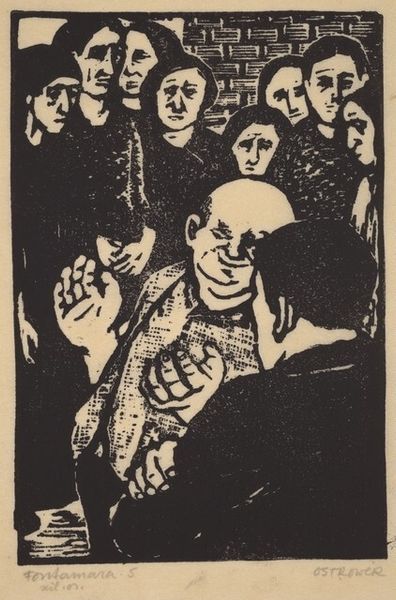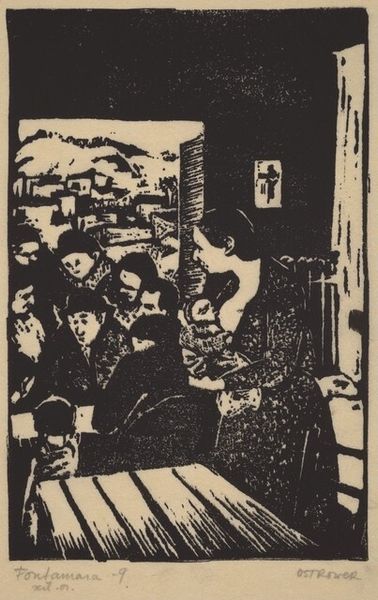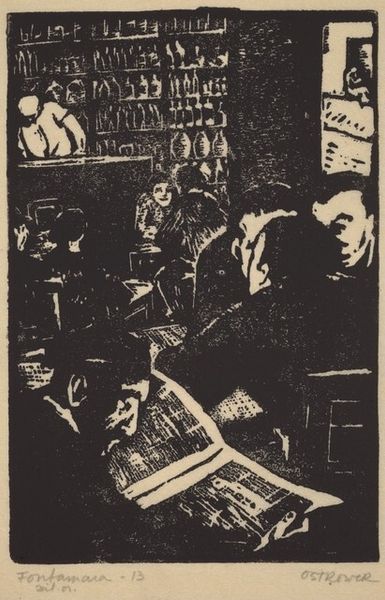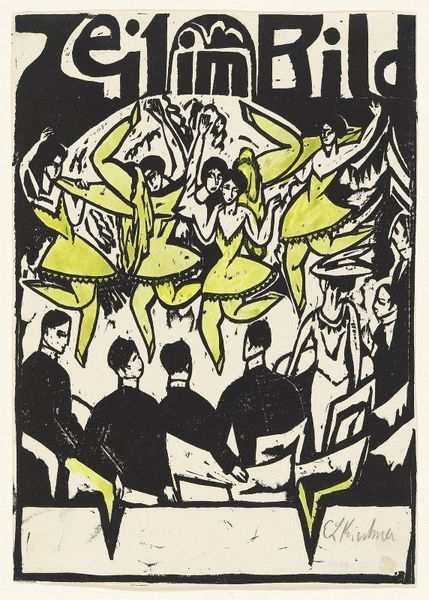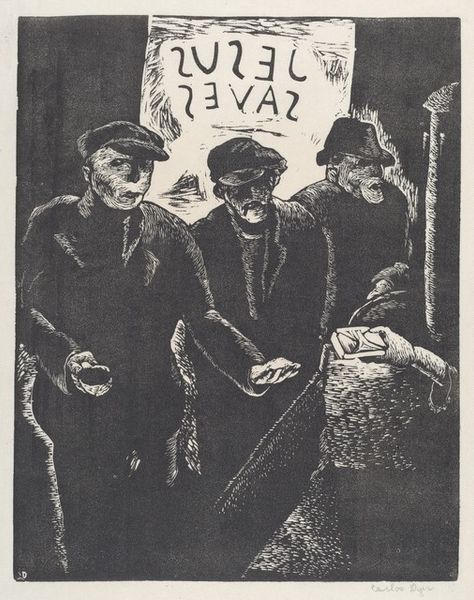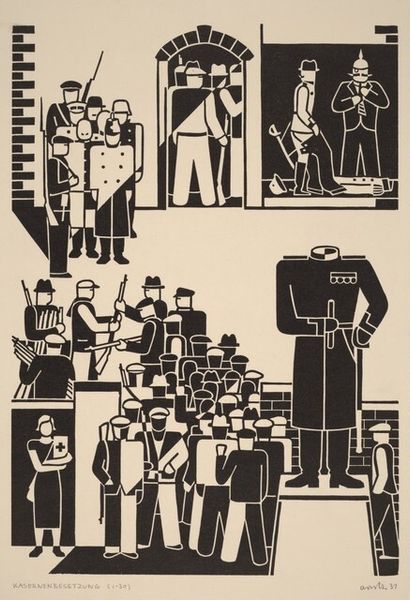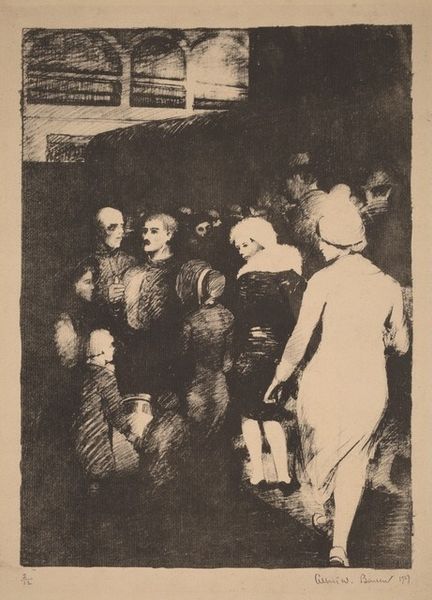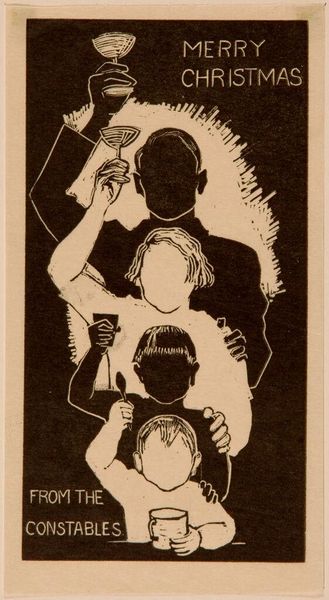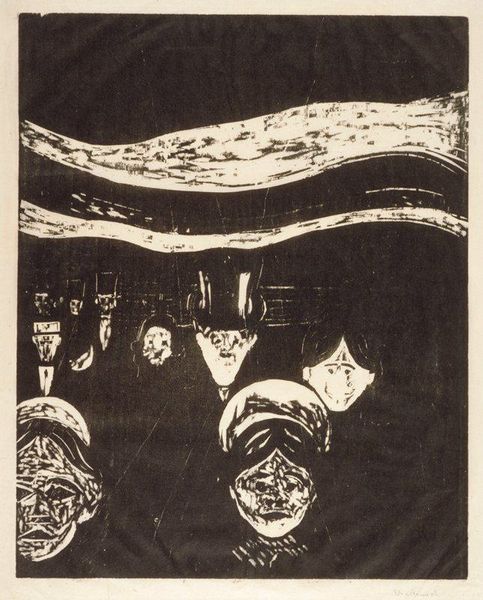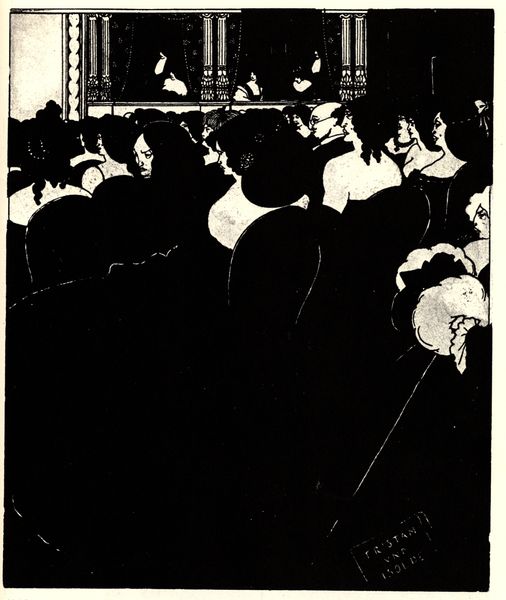
Copyright: National Gallery of Art: CC0 1.0
Editor: Fayga Ostrower's "Fontamara IV," created in 1947, is a woodcut print showing a dense group portrait in a village street. The black and white creates such a stark feel...what do you see in this piece? Curator: It strikes me immediately as an image laden with socio-political commentary. Given the date and the title referencing Ignazio Silone's novel, "Fontamara," this work can be seen as a poignant depiction of poverty, injustice, and rural struggles. What is your understanding of the Expressionist movement and how that relates to political messaging in this period? Editor: I think expressionism heightens emotion. It seems like the way Ostrower used stark blacks and whites exaggerates the grim atmosphere and intensifies the emotional impact of the faces within the crowd. Do you think the setting enhances these themes? Curator: Absolutely. The building seems to weigh heavily above them, like an oppressive structure. That said, how does the crowd function within the social landscape here? Are they passive or active? Editor: It's interesting. Some figures seem downtrodden, but there’s also that raised flag. So it looks like a blend of suffering and resistance maybe? Curator: Precisely! It portrays how even under pressure, resistance simmers, doesn't it? I'd wager the rough, graphic style lends it a powerful immediacy, turning this scene into an emblem of societal tensions and challenges. Editor: I agree; seeing it this way shifts my perspective entirely. I came in seeing only the grimness of the print, but now recognize so much complexity rooted in the social context. Curator: And hopefully appreciate the ways Ostrower leveraged that artistic vocabulary to give visual form to complex and poignant aspects of the human condition.
Comments
No comments
Be the first to comment and join the conversation on the ultimate creative platform.
